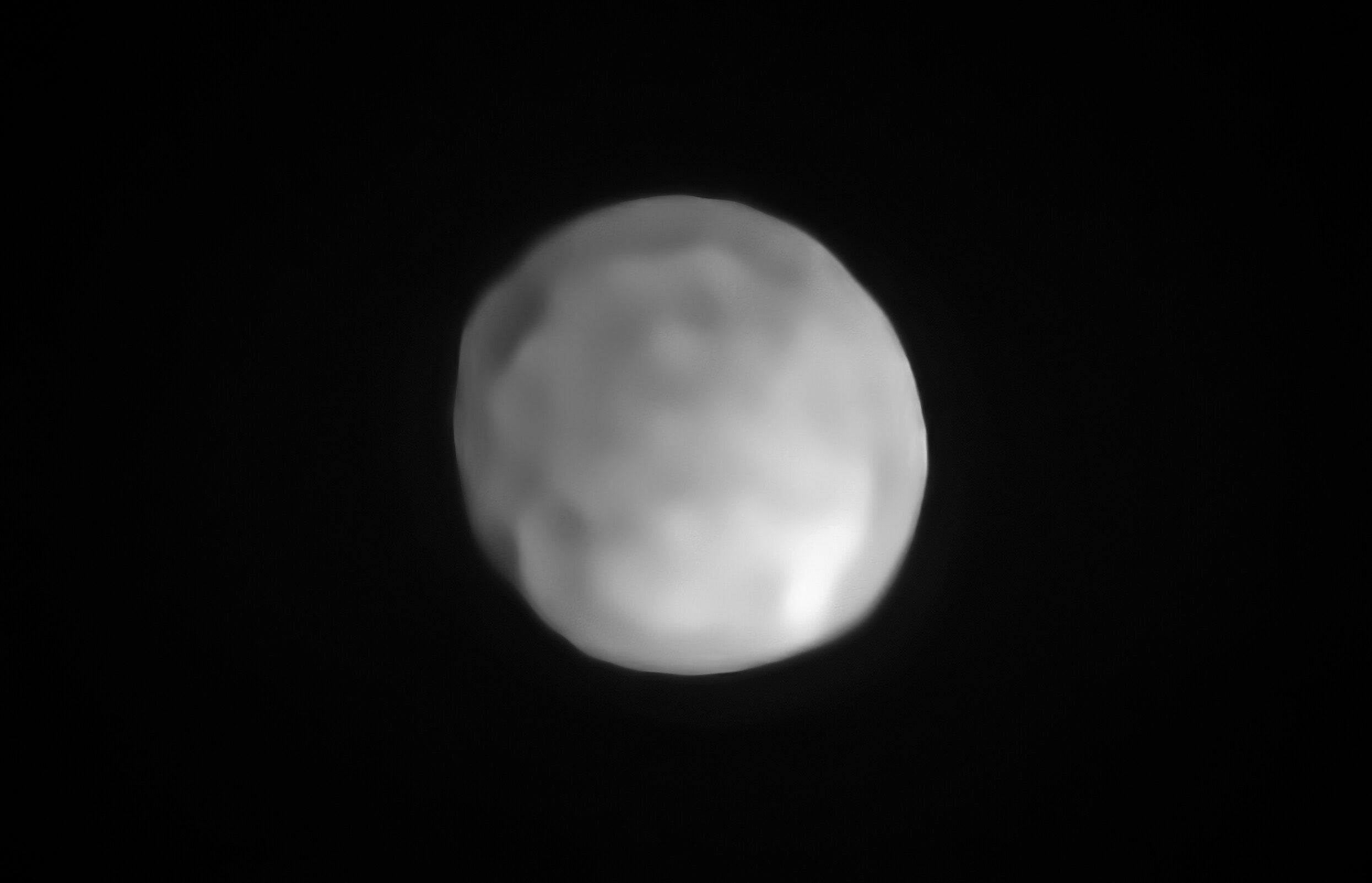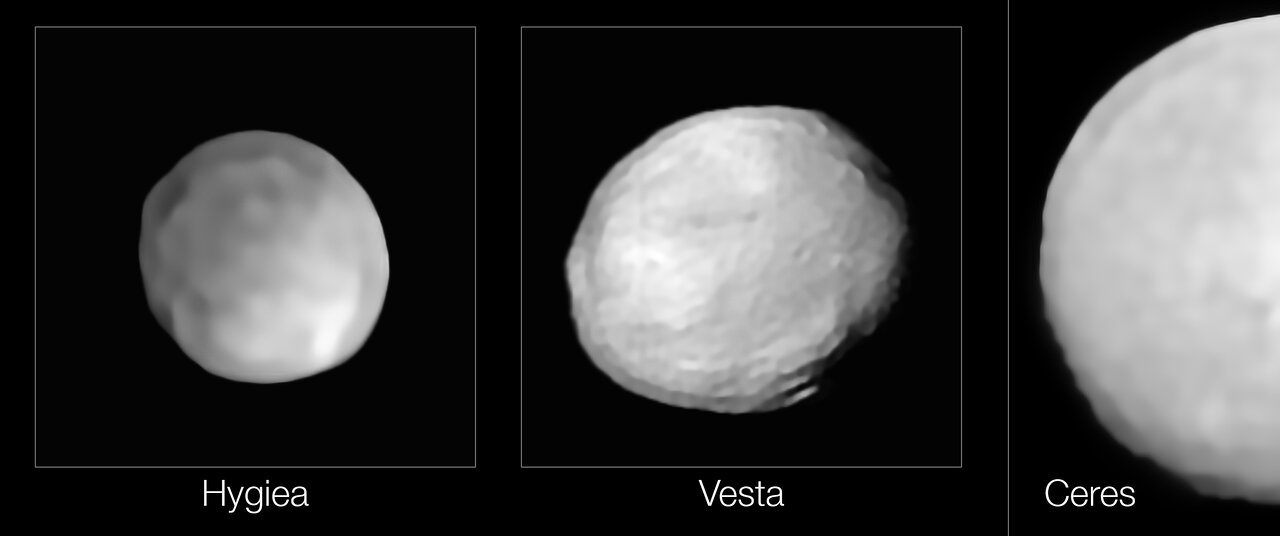
Astronomers have captured high-resolution imagery of Hygiea, the fourth largest rock in the Asteroid Belt. And low and behold, Hygiea is spherical in shape. That's a pretty important dwarf-planet marker, and the only one Hygiea was missing until now.
Asteroids boast a variety of shapes, but the rounded shape of dwarf planets shows that they had enough mass for its own gravity to pull it into this round shape. Hygiea already met the other requirements for dwarf-planet classification since it orbits the sun, is not a moon orbiting another planet and has not cleared other objects out of its own orbit.
So, how big is this potential new member of the dwarf planet family? The team of astronomers, led by researcher Pierre Vernazza of the Laboratoire d'Astrophysique de Marseille in France constrained Hygiea's size, and estimated its diameter is just over 267 miles (430 kilometers). For comparison, Hygiea is less than one-fifth the width of its most famous cousin, Pluto, which has a diameter of about 1,491 miles (2,400 km).
Ceres held the title of smallest dwarf planet until now, with a diameter of almost 590 miles (950 km).
Before Hygiea can be officially upgraded to dwarf planet status, the International Astronomical Union — the same group of astronomers who were responsible making Pluto a dwarf planet — must review all the evidence and take a vote.
"Thanks to these images, Hygiea may be reclassified as a dwarf planet, so far the smallest in the solar system," Vernazza said in a statement from the European Southern Observatory (ESO), which manages the SPHERE instrument that produced the high-resolution imagery in the study. SPHERE (which stands for Spectro-Polarimetric High-contrast Exoplanet Research) sits atop the Very Large Telescope at ESO's Paranal Observatory in Chile.
"Thanks to the VLT and the new generation adaptive-optics instrument SPHERE, we are now imaging main belt asteroids with unprecedented resolution, closing the gap between Earth-based and interplanetary mission observations," Vernazza added.




Reader Comments
to our Newsletter